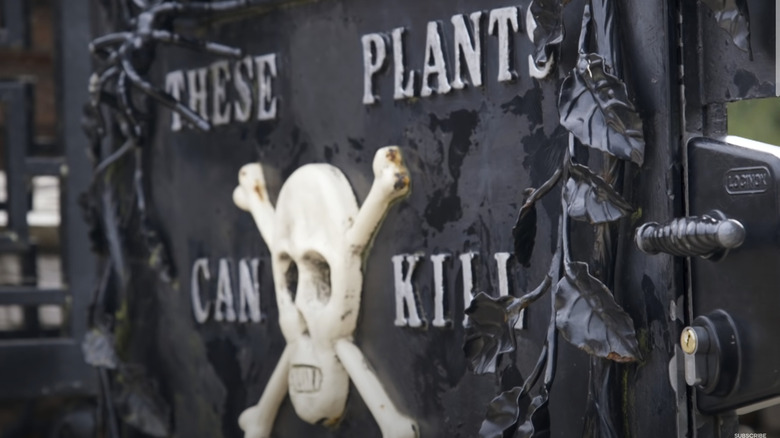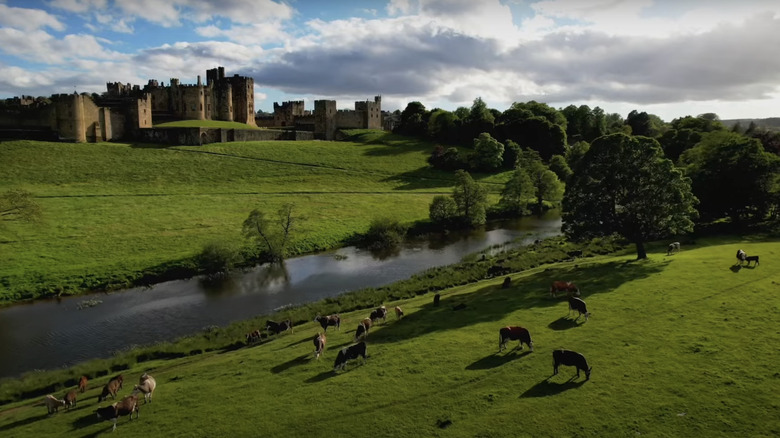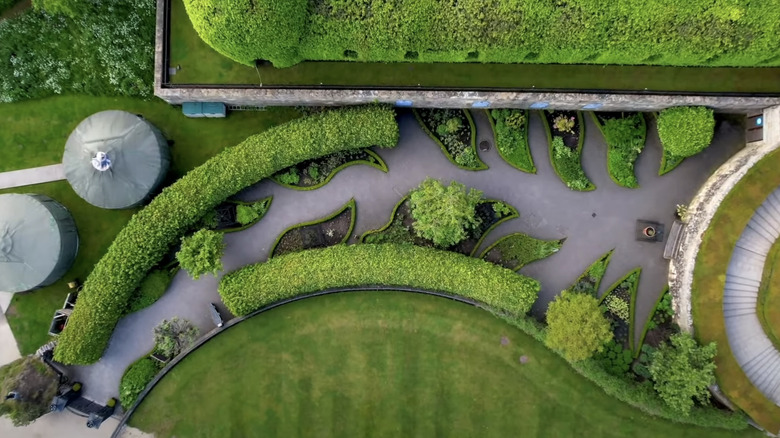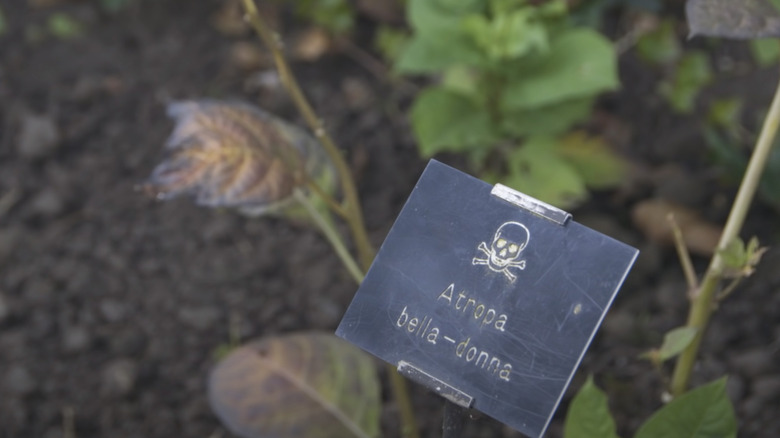The World's Most Dangerous Garden Is Deadlier Than You'd Imagine
The Alnwick Garden in Northumberland, England boasts that it is "a garden for everyone" — which apparently includes fans of poison. The garden has no shortage of interesting spots to visit, featuring a bamboo labyrinth, water features, and a fancy tea room, but its most famous attraction is certainly The Poison Garden. This garden is home to more than 100 different plants — all of them deadly. Many of these plants have been used by murderers, serial killers ,and assassins throughout history. Some are notorious killers like lethal nightshade, while others are common garden plants that few would know are dangerous.
Fascinatingly, the garden was designed not as a poisoner's arsenal, but as a way to get kids interested in gardening. As quoted by Smithsonian Magazine, the garden's owner, Jane Percy, Duchess of Northumberland, stated: "Children don't care that aspirin comes from a bark of a tree. What's really interesting is to know how a plant kills you, and how the patient dies, and what you feel like before you die."
The origins of the garden
When Jane Percy became the Duchess of Northumberland in 1995, her husband tasked her with transforming the gardens. Once, they had been designed by the talented landscape artist Capability Brown, but they had since fallen into disrepair. Although her husband likely was expecting some ordered beds, the duchess had another idea. She hired famous landscape architect Jacques Wirtz to design an enormous garden that would bring in hundreds of thousands of tourists every year.
Inspired by apothecary gardens, the duchess originally planned to have a garden full of plants that could be used as medicine. After a trip abroad took her to the Medici poison garden, she decided that a garden of deadly plants would be more interesting.
While visiting the garden, patrons can learn about how these plants were used throughout history, as poisons, recreational drugs, or garden ornamentation — and what happens if a person ingests too much of it.
Growing illegal plants
While all of the plants grown in the Poison Garden have the ability to kill, only some are illegal. While notorious killers like hemlock, deadly nightshade, and ricin are all grown there, it is the plants that some use to make recreational drugs that required special dispensation from the UK government to grow and show the public.
Some of the plants that the duchess had to seek permission to have in the Poison Garden include cannabis, opium poppies, coca plants used for making cocaine, and psilocybin mushrooms. As described in an interview with The Guardian, the duchess explained that this is all a part of their educational mission, and they hope that it will help people to educate their children on how plants can be both natural and dangerous.
"Drugs are a major concern across the country and an emotive issue. The poison garden will offer a new avenue, outside the classroom, to get people talking about the misuse of drugs — most of which grow in nature."
Do not touch
While the garden is open to the public and children are encouraged to visit and learn about the deadly plants growing there, there are some precautions that visitors have to take. As described by a report from WTVR CBS 6, the gardeners wear protective suits and heavy masks over their faces before working on the plants, because some of the plants can release saps when cut that cause serious blistering. Visitors aren't required to wear protective gear like this, but they are forbidden from touching, smelling, and of course, eating any of the plants.
While visitors are accompanied at all times by a guide and are supposed to be escorted by marshals when interacting with illegal plants, there can still be accidents. Not every plant needs to be touched to be dangerous. As noted by Smithsonian Magazine, one summer seven guests actually passed out while walking in the garden due to the fumes.



